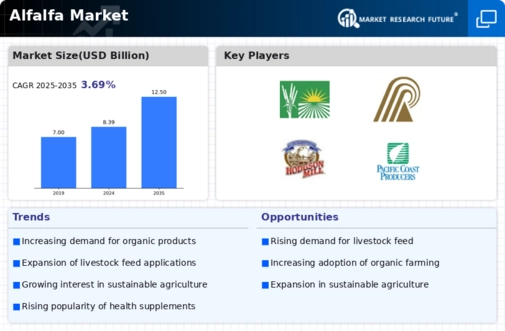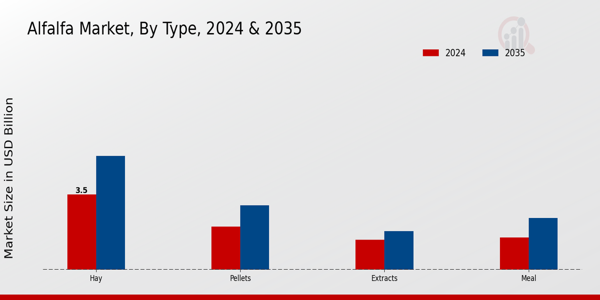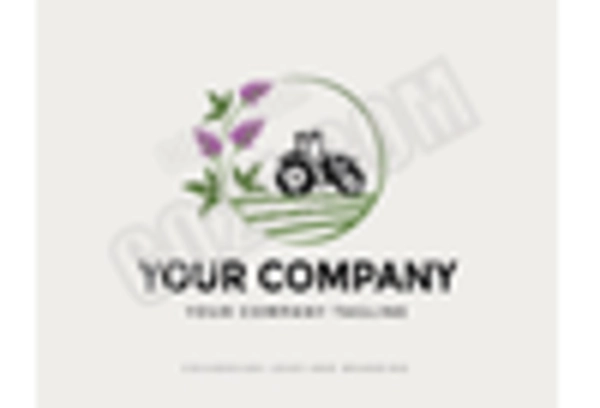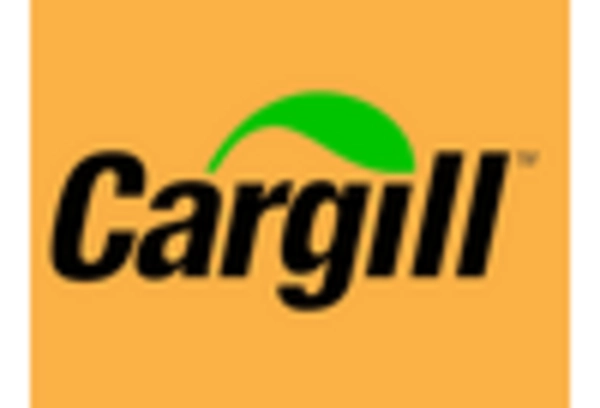-
EXECUTIVE SUMMARY
-
\r\n
-
Market Overview
-
\r\n
-
Key Findings
-
\r\n
-
Market Segmentation
-
\r\n
-
Competitive Landscape
-
\r\n
-
Challenges and Opportunities
-
\r\n
-
Future Outlook
-
\r\n
-
MARKET INTRODUCTION
-
\r\n
-
Definition
-
\r\n
-
Scope of the study
- Research Objective
- Assumption
- Limitations
-
\r\n
-
\r\n
-
\r\n
-
\r\n
-
RESEARCH METHODOLOGY
-
\r\n
-
Overview
-
\r\n
-
Data Mining
-
\r\n
-
Secondary Research
-
\r\n
-
Primary Research
- Primary Interviews and Information Gathering Process
- Breakdown of Primary Respondents
-
\r\n
-
\r\n
-
\r\n
-
Forecasting Model
-
\r\n
-
Market Size Estimation
- Bottom-Up Approach
- Top-Down Approach
-
\r\n
-
\r\n
-
\r\n
-
Data Triangulation
-
\r\n
-
Validation
-
\r\n
-
MARKET DYNAMICS
-
\r\n
-
Overview
-
\r\n
-
Drivers
-
\r\n
-
Restraints
-
\r\n
-
Opportunities
-
\r\n
-
MARKET FACTOR ANALYSIS
-
\r\n
-
Value chain Analysis
-
\r\n
-
Porter's Five Forces Analysis
- Bargaining Power of Suppliers
- Bargaining Power of Buyers
- Threat of New Entrants
- Threat of Substitutes
- Intensity of Rivalry
-
\r\n
-
\r\n
-
\r\n
-
\r\n
-
\r\n
-
\r\n
-
COVID-19 Impact Analysis
- Market Impact Analysis
- Regional Impact
- Opportunity and Threat Analysis
-
\r\n
-
\r\n
-
\r\n
-
\r\n
-
ALFALFA MARKET, BY TYPE (USD BILLION)
-
\r\n
-
Hay
-
\r\n
-
Pellets
-
\r\n
-
Meal
-
\r\n
-
Extracts
-
\r\n
-
ALFALFA MARKET, BY APPLICATION (USD BILLION)
-
\r\n
-
Animal Feed
-
\r\n
-
Human Food
-
\r\n
-
Nutraceuticals
-
\r\n
-
Cosmetics
-
\r\n
-
ALFALFA MARKET, BY END USE (USD BILLION)
-
\r\n
-
Dairy Farms
-
\r\n
-
Beef Farms
-
\r\n
-
Poultry Farms
-
\r\n
-
Aquaculture
-
\r\n
-
ALFALFA MARKET, BY FORM (USD BILLION)
-
\r\n
-
Whole Plant
-
\r\n
-
Leaf
-
\r\n
-
Seed
-
\r\n
-
ALFALFA MARKET, BY REGIONAL (USD BILLION)
-
\r\n
-
North America
- US
- Canada
-
\r\n
-
\r\n
-
\r\n
-
Europe
- Germany
- UK
- France
- Russia
- Italy
- Spain
- Rest of Europe
-
\r\n
-
\r\n
-
\r\n
-
\r\n
-
\r\n
-
\r\n
-
\r\n
-
\r\n
-
APAC
- China
- India
- Japan
- South Korea
- Malaysia
- Thailand
- Indonesia
- Rest of APAC
-
\r\n
-
\r\n
-
\r\n
-
\r\n
-
\r\n
-
\r\n
-
\r\n
-
\r\n
-
\r\n
-
South America
- Brazil
- Mexico
- Argentina
- Rest of South America
-
\r\n
-
\r\n
-
\r\n
-
\r\n
-
\r\n
-
MEA
- GCC Countries
- South Africa
- Rest of MEA
-
\r\n
-
\r\n
-
\r\n
-
\r\n
-
COMPETITIVE LANDSCAPE
-
\r\n
-
Overview
-
\r\n
-
Competitive Analysis
-
\r\n
-
Market share Analysis
-
\r\n
-
Major Growth Strategy in the Alfalfa Market
-
\r\n
-
Competitive Benchmarking
-
\r\n
-
Leading Players in Terms of Number of Developments in the Alfalfa Market
-
\r\n
-
Key developments and growth strategies
- New Product Launch/Service Deployment
- Merger & Acquisitions
- Joint Ventures
-
\r\n
-
\r\n
-
\r\n
-
\r\n
-
Major Players Financial Matrix
- Sales and Operating Income
- Major Players R&D Expenditure. 2023
-
\r\n
-
\r\n
-
\r\n
-
COMPANY PROFILES
-
\r\n
-
Pinnacle Agriculture
- Financial Overview
- Products Offered
- Key Developments
- SWOT Analysis
- Key Strategies
-
\r\n
-
\r\n
-
\r\n
-
\r\n
-
\r\n
-
\r\n
-
Barr Lake Farm
- Financial Overview
- Products Offered
- Key Developments
- SWOT Analysis
- Key Strategies
-
\r\n
-
\r\n
-
\r\n
-
\r\n
-
\r\n
-
\r\n
-
Alfalfa Market Co
- Financial Overview
- Products Offered
- Key Developments
- SWOT Analysis
- Key Strategies
-
\r\n
-
\r\n
-
\r\n
-
\r\n
-
\r\n
-
\r\n
-
California Alfalfa Company
- Financial Overview
- Products Offered
- Key Developments
- SWOT Analysis
- Key Strategies
-
\r\n
-
\r\n
-
\r\n
-
\r\n
-
\r\n
-
\r\n
-
Morris Hay
- Financial Overview
- Products Offered
- Key Developments
- SWOT Analysis
- Key Strategies
-
\r\n
-
\r\n
-
\r\n
-
\r\n
-
\r\n
-
\r\n
-
Vesey Seeds
- Financial Overview
- Products Offered
- Key Developments
- SWOT Analysis
- Key Strategies
-
\r\n
-
\r\n
-
\r\n
-
\r\n
-
\r\n
-
\r\n
-
Green Prairie International
- Financial Overview
- Products Offered
- Key Developments
- SWOT Analysis
- Key Strategies
-
\r\n
-
\r\n
-
\r\n
-
\r\n
-
\r\n
-
\r\n
-
Mediagrain
- Financial Overview
- Products Offered
- Key Developments
- SWOT Analysis
- Key Strategies
-
\r\n
-
\r\n
-
\r\n
-
\r\n
-
\r\n
-
\r\n
-
Imperial Valley Alfalfa Company
- Financial Overview
- Products Offered
- Key Developments
- SWOT Analysis
- Key Strategies
-
\r\n
-
\r\n
-
\r\n
-
\r\n
-
\r\n
-
\r\n
-
Standlee Premium Western Forage
- Financial Overview
- Products Offered
- Key Developments
- SWOT Analysis
- Key Strategies
-
\r\n
-
\r\n
-
\r\n
-
\r\n
-
\r\n
-
\r\n
-
Rhode Island Alfalfa
- Financial Overview
- Products Offered
- Key Developments
- SWOT Analysis
- Key Strategies
-
\r\n
-
\r\n
-
\r\n
-
\r\n
-
\r\n
-
\r\n
-
Aldahra Fagavi
- Financial Overview
- Products Offered
- Key Developments
- SWOT Analysis
- Key Strategies
-
\r\n
-
\r\n
-
\r\n
-
\r\n
-
\r\n
-
\r\n
-
Horizon Organic
- Financial Overview
- Products Offered
- Key Developments
- SWOT Analysis
- Key Strategies
-
\r\n
-
\r\n
-
\r\n
-
\r\n
-
\r\n
-
\r\n
-
Alfalfa Pellets LLC
- Financial Overview
- Products Offered
- Key Developments
- SWOT Analysis
- Key Strategies
-
\r\n
-
\r\n
-
\r\n
-
\r\n
-
\r\n
-
\r\n
-
Hay USA
- Financial Overview
- Products Offered
- Key Developments
- SWOT Analysis
- Key Strategies
-
\r\n
-
\r\n
-
\r\n
-
\r\n
-
\r\n
-
\r\n
-
APPENDIX
-
\r\n
-
References
-
\r\n
-
Related Reports
-
\r\n
-
LIST OF TABLES
-
\r\n
-
LIST OF ASSUMPTIONS
-
\r\n
-
NORTH AMERICA ALFALFA MARKET SIZE ESTIMATES & FORECAST, BY TYPE, 2019-2035 (USD BILLIONS)
-
\r\n
-
NORTH AMERICA ALFALFA MARKET SIZE ESTIMATES & FORECAST, BY APPLICATION, 2019-2035 (USD BILLIONS)
-
\r\n
-
NORTH AMERICA ALFALFA MARKET SIZE ESTIMATES & FORECAST, BY END USE, 2019-2035 (USD BILLIONS)
-
\r\n
-
NORTH AMERICA ALFALFA MARKET SIZE ESTIMATES & FORECAST, BY FORM, 2019-2035 (USD BILLIONS)
-
\r\n
-
NORTH AMERICA ALFALFA MARKET SIZE ESTIMATES & FORECAST, BY REGIONAL, 2019-2035 (USD BILLIONS)
-
\r\n
-
US ALFALFA MARKET SIZE ESTIMATES & FORECAST, BY TYPE, 2019-2035 (USD BILLIONS)
-
\r\n
-
US ALFALFA MARKET SIZE ESTIMATES & FORECAST, BY APPLICATION, 2019-2035 (USD BILLIONS)
-
\r\n
-
US ALFALFA MARKET SIZE ESTIMATES & FORECAST, BY END USE, 2019-2035 (USD BILLIONS)
-
\r\n
-
US ALFALFA MARKET SIZE ESTIMATES & FORECAST, BY FORM, 2019-2035 (USD BILLIONS)
-
\r\n
-
US ALFALFA MARKET SIZE ESTIMATES & FORECAST, BY REGIONAL, 2019-2035 (USD BILLIONS)
-
\r\n
-
CANADA ALFALFA MARKET SIZE ESTIMATES & FORECAST, BY TYPE, 2019-2035 (USD BILLIONS)
-
\r\n
-
CANADA ALFALFA MARKET SIZE ESTIMATES & FORECAST, BY APPLICATION, 2019-2035 (USD BILLIONS)
-
\r\n
-
CANADA ALFALFA MARKET SIZE ESTIMATES & FORECAST, BY END USE, 2019-2035 (USD BILLIONS)
-
\r\n
-
CANADA ALFALFA MARKET SIZE ESTIMATES & FORECAST, BY FORM, 2019-2035 (USD BILLIONS)
-
\r\n
-
CANADA ALFALFA MARKET SIZE ESTIMATES & FORECAST, BY REGIONAL, 2019-2035 (USD BILLIONS)
-
\r\n
-
EUROPE ALFALFA MARKET SIZE ESTIMATES & FORECAST, BY TYPE, 2019-2035 (USD BILLIONS)
-
\r\n
-
EUROPE ALFALFA MARKET SIZE ESTIMATES & FORECAST, BY APPLICATION, 2019-2035 (USD BILLIONS)
-
\r\n
-
EUROPE ALFALFA MARKET SIZE ESTIMATES & FORECAST, BY END USE, 2019-2035 (USD BILLIONS)
-
\r\n
-
EUROPE ALFALFA MARKET SIZE ESTIMATES & FORECAST, BY FORM, 2019-2035 (USD BILLIONS)
-
\r\n
-
EUROPE ALFALFA MARKET SIZE ESTIMATES & FORECAST, BY REGIONAL, 2019-2035 (USD BILLIONS)
-
\r\n
-
GERMANY ALFALFA MARKET SIZE ESTIMATES & FORECAST, BY TYPE, 2019-2035 (USD BILLIONS)
-
\r\n
-
GERMANY ALFALFA MARKET SIZE ESTIMATES & FORECAST, BY APPLICATION, 2019-2035 (USD BILLIONS)
-
\r\n
-
GERMANY ALFALFA MARKET SIZE ESTIMATES & FORECAST, BY END USE, 2019-2035 (USD BILLIONS)
-
\r\n
-
GERMANY ALFALFA MARKET SIZE ESTIMATES & FORECAST, BY FORM, 2019-2035 (USD BILLIONS)
-
\r\n
-
GERMANY ALFALFA MARKET SIZE ESTIMATES & FORECAST, BY REGIONAL, 2019-2035 (USD BILLIONS)
-
\r\n
-
UK ALFALFA MARKET SIZE ESTIMATES & FORECAST, BY TYPE, 2019-2035 (USD BILLIONS)
-
\r\n
-
UK ALFALFA MARKET SIZE ESTIMATES & FORECAST, BY APPLICATION, 2019-2035 (USD BILLIONS)
-
\r\n
-
UK ALFALFA MARKET SIZE ESTIMATES & FORECAST, BY END USE, 2019-2035 (USD BILLIONS)
-
\r\n
-
UK ALFALFA MARKET SIZE ESTIMATES & FORECAST, BY FORM, 2019-2035 (USD BILLIONS)
-
\r\n
-
UK ALFALFA MARKET SIZE ESTIMATES & FORECAST, BY REGIONAL, 2019-2035 (USD BILLIONS)
-
\r\n
-
FRANCE ALFALFA MARKET SIZE ESTIMATES & FORECAST, BY TYPE, 2019-2035 (USD BILLIONS)
-
\r\n
-
FRANCE ALFALFA MARKET SIZE ESTIMATES & FORECAST, BY APPLICATION, 2019-2035 (USD BILLIONS)
-
\r\n
-
FRANCE ALFALFA MARKET SIZE ESTIMATES & FORECAST, BY END USE, 2019-2035 (USD BILLIONS)
-
\r\n
-
FRANCE ALFALFA MARKET SIZE ESTIMATES & FORECAST, BY FORM, 2019-2035 (USD BILLIONS)
-
\r\n
-
FRANCE ALFALFA MARKET SIZE ESTIMATES & FORECAST, BY REGIONAL, 2019-2035 (USD BILLIONS)
-
\r\n
-
RUSSIA ALFALFA MARKET SIZE ESTIMATES & FORECAST, BY TYPE, 2019-2035 (USD BILLIONS)
-
\r\n
-
RUSSIA ALFALFA MARKET SIZE ESTIMATES & FORECAST, BY APPLICATION, 2019-2035 (USD BILLIONS)
-
\r\n
-
RUSSIA ALFALFA MARKET SIZE ESTIMATES & FORECAST, BY END USE, 2019-2035 (USD BILLIONS)
-
\r\n
-
RUSSIA ALFALFA MARKET SIZE ESTIMATES & FORECAST, BY FORM, 2019-2035 (USD BILLIONS)
-
\r\n
-
RUSSIA ALFALFA MARKET SIZE ESTIMATES & FORECAST, BY REGIONAL, 2019-2035 (USD BILLIONS)
-
\r\n
-
ITALY ALFALFA MARKET SIZE ESTIMATES & FORECAST, BY TYPE, 2019-2035 (USD BILLIONS)
-
\r\n
-
ITALY ALFALFA MARKET SIZE ESTIMATES & FORECAST, BY APPLICATION, 2019-2035 (USD BILLIONS)
-
\r\n
-
ITALY ALFALFA MARKET SIZE ESTIMATES & FORECAST, BY END USE, 2019-2035 (USD BILLIONS)
-
\r\n
-
ITALY ALFALFA MARKET SIZE ESTIMATES & FORECAST, BY FORM, 2019-2035 (USD BILLIONS)
-
\r\n
-
ITALY ALFALFA MARKET SIZE ESTIMATES & FORECAST, BY REGIONAL, 2019-2035 (USD BILLIONS)
-
\r\n
-
SPAIN ALFALFA MARKET SIZE ESTIMATES & FORECAST, BY TYPE, 2019-2035 (USD BILLIONS)
-
\r\n
-
SPAIN ALFALFA MARKET SIZE ESTIMATES & FORECAST, BY APPLICATION, 2019-2035 (USD BILLIONS)
-
\r\n
-
SPAIN ALFALFA MARKET SIZE ESTIMATES & FORECAST, BY END USE, 2019-2035 (USD BILLIONS)
-
\r\n
-
SPAIN ALFALFA MARKET SIZE ESTIMATES & FORECAST, BY FORM, 2019-2035 (USD BILLIONS)
-
\r\n
-
SPAIN ALFALFA MARKET SIZE ESTIMATES & FORECAST, BY REGIONAL, 2019-2035 (USD BILLIONS)
-
\r\n
-
REST OF EUROPE ALFALFA MARKET SIZE ESTIMATES & FORECAST, BY TYPE, 2019-2035 (USD BILLIONS)
-
\r\n
-
REST OF EUROPE ALFALFA MARKET SIZE ESTIMATES & FORECAST, BY APPLICATION, 2019-2035 (USD BILLIONS)
-
\r\n
-
REST OF EUROPE ALFALFA MARKET SIZE ESTIMATES & FORECAST, BY END USE, 2019-2035 (USD BILLIONS)
-
\r\n
-
REST OF EUROPE ALFALFA MARKET SIZE ESTIMATES & FORECAST, BY FORM, 2019-2035 (USD BILLIONS)
-
\r\n
-
REST OF EUROPE ALFALFA MARKET SIZE ESTIMATES & FORECAST, BY REGIONAL, 2019-2035 (USD BILLIONS)
-
\r\n
-
APAC ALFALFA MARKET SIZE ESTIMATES & FORECAST, BY TYPE, 2019-2035 (USD BILLIONS)
-
\r\n
-
APAC ALFALFA MARKET SIZE ESTIMATES & FORECAST, BY APPLICATION, 2019-2035 (USD BILLIONS)
-
\r\n
-
APAC ALFALFA MARKET SIZE ESTIMATES & FORECAST, BY END USE, 2019-2035 (USD BILLIONS)
-
\r\n
-
APAC ALFALFA MARKET SIZE ESTIMATES & FORECAST, BY FORM, 2019-2035 (USD BILLIONS)
-
\r\n
-
APAC ALFALFA MARKET SIZE ESTIMATES & FORECAST, BY REGIONAL, 2019-2035 (USD BILLIONS)
-
\r\n
-
CHINA ALFALFA MARKET SIZE ESTIMATES & FORECAST, BY TYPE, 2019-2035 (USD BILLIONS)
-
\r\n
-
CHINA ALFALFA MARKET SIZE ESTIMATES & FORECAST, BY APPLICATION, 2019-2035 (USD BILLIONS)
-
\r\n
-
CHINA ALFALFA MARKET SIZE ESTIMATES & FORECAST, BY END USE, 2019-2035 (USD BILLIONS)
-
\r\n
-
CHINA ALFALFA MARKET SIZE ESTIMATES & FORECAST, BY FORM, 2019-2035 (USD BILLIONS)
-
\r\n
-
CHINA ALFALFA MARKET SIZE ESTIMATES & FORECAST, BY REGIONAL, 2019-2035 (USD BILLIONS)
-
\r\n
-
INDIA ALFALFA MARKET SIZE ESTIMATES & FORECAST, BY TYPE, 2019-2035 (USD BILLIONS)
-
\r\n
-
INDIA ALFALFA MARKET SIZE ESTIMATES & FORECAST, BY APPLICATION, 2019-2035 (USD BILLIONS)
-
\r\n
-
INDIA ALFALFA MARKET SIZE ESTIMATES & FORECAST, BY END USE, 2019-2035 (USD BILLIONS)
-
\r\n
-
INDIA ALFALFA MARKET SIZE ESTIMATES & FORECAST, BY FORM, 2019-2035 (USD BILLIONS)
-
\r\n
-
INDIA ALFALFA MARKET SIZE ESTIMATES & FORECAST, BY REGIONAL, 2019-2035 (USD BILLIONS)
-
\r\n
-
JAPAN ALFALFA MARKET SIZE ESTIMATES & FORECAST, BY TYPE, 2019-2035 (USD BILLIONS)
-
\r\n
-
JAPAN ALFALFA MARKET SIZE ESTIMATES & FORECAST, BY APPLICATION, 2019-2035 (USD BILLIONS)
-
\r\n
-
JAPAN ALFALFA MARKET SIZE ESTIMATES & FORECAST, BY END USE, 2019-2035 (USD BILLIONS)
-
\r\n
-
JAPAN ALFALFA MARKET SIZE ESTIMATES & FORECAST, BY FORM, 2019-2035 (USD BILLIONS)
-
\r\n
-
JAPAN ALFALFA MARKET SIZE ESTIMATES & FORECAST, BY REGIONAL, 2019-2035 (USD BILLIONS)
-
\r\n
-
SOUTH KOREA ALFALFA MARKET SIZE ESTIMATES & FORECAST, BY TYPE, 2019-2035 (USD BILLIONS)
-
\r\n
-
SOUTH KOREA ALFALFA MARKET SIZE ESTIMATES & FORECAST, BY APPLICATION, 2019-2035 (USD BILLIONS)
-
\r\n
-
SOUTH KOREA ALFALFA MARKET SIZE ESTIMATES & FORECAST, BY END USE, 2019-2035 (USD BILLIONS)
-
\r\n
-
SOUTH KOREA ALFALFA MARKET SIZE ESTIMATES & FORECAST, BY FORM, 2019-2035 (USD BILLIONS)
-
\r\n
-
SOUTH KOREA ALFALFA MARKET SIZE ESTIMATES & FORECAST, BY REGIONAL, 2019-2035 (USD BILLIONS)
-
\r\n
-
MALAYSIA ALFALFA MARKET SIZE ESTIMATES & FORECAST, BY TYPE, 2019-2035 (USD BILLIONS)
-
\r\n
-
MALAYSIA ALFALFA MARKET SIZE ESTIMATES & FORECAST, BY APPLICATION, 2019-2035 (USD BILLIONS)
-
\r\n
-
MALAYSIA ALFALFA MARKET SIZE ESTIMATES & FORECAST, BY END USE, 2019-2035 (USD BILLIONS)
-
\r\n
-
MALAYSIA ALFALFA MARKET SIZE ESTIMATES & FORECAST, BY FORM, 2019-2035 (USD BILLIONS)
-
\r\n
-
MALAYSIA ALFALFA MARKET SIZE ESTIMATES & FORECAST, BY REGIONAL, 2019-2035 (USD BILLIONS)
-
\r\n
-
THAILAND ALFALFA MARKET SIZE ESTIMATES & FORECAST, BY TYPE, 2019-2035 (USD BILLIONS)
-
\r\n
-
THAILAND ALFALFA MARKET SIZE ESTIMATES & FORECAST, BY APPLICATION, 2019-2035 (USD BILLIONS)
-
\r\n
-
THAILAND ALFALFA MARKET SIZE ESTIMATES & FORECAST, BY END USE, 2019-2035 (USD BILLIONS)
-
\r\n
-
THAILAND ALFALFA MARKET SIZE ESTIMATES & FORECAST, BY FORM, 2019-2035 (USD BILLIONS)
-
\r\n
-
THAILAND ALFALFA MARKET SIZE ESTIMATES & FORECAST, BY REGIONAL, 2019-2035 (USD BILLIONS)
-
\r\n
-
INDONESIA ALFALFA MARKET SIZE ESTIMATES & FORECAST, BY TYPE, 2019-2035 (USD BILLIONS)
-
\r\n
-
INDONESIA ALFALFA MARKET SIZE ESTIMATES & FORECAST, BY APPLICATION, 2019-2035 (USD BILLIONS)
-
\r\n
-
INDONESIA ALFALFA MARKET SIZE ESTIMATES & FORECAST, BY END USE, 2019-2035 (USD BILLIONS)
-
\r\n
-
INDONESIA ALFALFA MARKET SIZE ESTIMATES & FORECAST, BY FORM, 2019-2035 (USD BILLIONS)
-
\r\n
-
INDONESIA ALFALFA MARKET SIZE ESTIMATES & FORECAST, BY REGIONAL, 2019-2035 (USD BILLIONS)
-
\r\n
-
REST OF APAC ALFALFA MARKET SIZE ESTIMATES & FORECAST, BY TYPE, 2019-2035 (USD BILLIONS)
-
\r\n
-
REST OF APAC ALFALFA MARKET SIZE ESTIMATES & FORECAST, BY APPLICATION, 2019-2035 (USD BILLIONS)
-
\r\n
-
REST OF APAC ALFALFA MARKET SIZE ESTIMATES & FORECAST, BY END USE, 2019-2035 (USD BILLIONS)
-
\r\n
-
REST OF APAC ALFALFA MARKET SIZE ESTIMATES & FORECAST, BY FORM, 2019-2035 (USD BILLIONS)
-
\r\n
-
REST OF APAC ALFALFA MARKET SIZE ESTIMATES & FORECAST, BY REGIONAL, 2019-2035 (USD BILLIONS)
-
\r\n
-
SOUTH AMERICA ALFALFA MARKET SIZE ESTIMATES & FORECAST, BY TYPE, 2019-2035 (USD BILLIONS)
-
\r\n
-
SOUTH AMERICA ALFALFA MARKET SIZE ESTIMATES & FORECAST, BY APPLICATION, 2019-2035 (USD BILLIONS)
-
\r\n
-
SOUTH AMERICA ALFALFA MARKET SIZE ESTIMATES & FORECAST, BY END USE, 2019-2035 (USD BILLIONS)
-
\r\n
-
SOUTH AMERICA ALFALFA MARKET SIZE ESTIMATES & FORECAST, BY FORM, 2019-2035 (USD BILLIONS)
-
\r\n
-
SOUTH AMERICA ALFALFA MARKET SIZE ESTIMATES & FORECAST, BY REGIONAL, 2019-2035 (USD BILLIONS)
-
\r\n
-
BRAZIL ALFALFA MARKET SIZE ESTIMATES & FORECAST, BY TYPE, 2019-2035 (USD BILLIONS)
-
\r\n
-
BRAZIL ALFALFA MARKET SIZE ESTIMATES & FORECAST, BY APPLICATION, 2019-2035 (USD BILLIONS)
-
\r\n
-
BRAZIL ALFALFA MARKET SIZE ESTIMATES & FORECAST, BY END USE, 2019-2035 (USD BILLIONS)
-
\r\n
-
BRAZIL ALFALFA MARKET SIZE ESTIMATES & FORECAST, BY FORM, 2019-2035 (USD BILLIONS)
-
\r\n
-
BRAZIL ALFALFA MARKET SIZE ESTIMATES & FORECAST, BY REGIONAL, 2019-2035 (USD BILLIONS)
-
\r\n
-
MEXICO ALFALFA MARKET SIZE ESTIMATES & FORECAST, BY TYPE, 2019-2035 (USD BILLIONS)
-
\r\n
-
MEXICO ALFALFA MARKET SIZE ESTIMATES & FORECAST, BY APPLICATION, 2019-2035 (USD BILLIONS)
-
\r\n
-
MEXICO ALFALFA MARKET SIZE ESTIMATES & FORECAST, BY END USE, 2019-2035 (USD BILLIONS)
-
\r\n
-
MEXICO ALFALFA MARKET SIZE ESTIMATES & FORECAST, BY FORM, 2019-2035 (USD BILLIONS)
-
\r\n
-
MEXICO ALFALFA MARKET SIZE ESTIMATES & FORECAST, BY REGIONAL, 2019-2035 (USD BILLIONS)
-
\r\n
-
ARGENTINA ALFALFA MARKET SIZE ESTIMATES & FORECAST, BY TYPE, 2019-2035 (USD BILLIONS)
-
\r\n
-
ARGENTINA ALFALFA MARKET SIZE ESTIMATES & FORECAST, BY APPLICATION, 2019-2035 (USD BILLIONS)
-
\r\n
-
ARGENTINA ALFALFA MARKET SIZE ESTIMATES & FORECAST, BY END USE, 2019-2035 (USD BILLIONS)
-
\r\n
-
ARGENTINA ALFALFA MARKET SIZE ESTIMATES & FORECAST, BY FORM, 2019-2035 (USD BILLIONS)
-
\r\n
-
ARGENTINA ALFALFA MARKET SIZE ESTIMATES & FORECAST, BY REGIONAL, 2019-2035 (USD BILLIONS)
-
\r\n
-
REST OF SOUTH AMERICA ALFALFA MARKET SIZE ESTIMATES & FORECAST, BY TYPE, 2019-2035 (USD BILLIONS)
-
\r\n
-
REST OF SOUTH AMERICA ALFALFA MARKET SIZE ESTIMATES & FORECAST, BY APPLICATION, 2019-2035 (USD BILLIONS)
-
\r\n
-
REST OF SOUTH AMERICA ALFALFA MARKET SIZE ESTIMATES & FORECAST, BY END USE, 2019-2035 (USD BILLIONS)
-
\r\n
-
REST OF SOUTH AMERICA ALFALFA MARKET SIZE ESTIMATES & FORECAST, BY FORM, 2019-2035 (USD BILLIONS)
-
\r\n
-
REST OF SOUTH AMERICA ALFALFA MARKET SIZE ESTIMATES & FORECAST, BY REGIONAL, 2019-2035 (USD BILLIONS)
-
\r\n
-
MEA ALFALFA MARKET SIZE ESTIMATES & FORECAST, BY TYPE, 2019-2035 (USD BILLIONS)
-
\r\n
-
MEA ALFALFA MARKET SIZE ESTIMATES & FORECAST, BY APPLICATION, 2019-2035 (USD BILLIONS)
-
\r\n
-
MEA ALFALFA MARKET SIZE ESTIMATES & FORECAST, BY END USE, 2019-2035 (USD BILLIONS)
-
\r\n
-
MEA ALFALFA MARKET SIZE ESTIMATES & FORECAST, BY FORM, 2019-2035 (USD BILLIONS)
-
\r\n
-
MEA ALFALFA MARKET SIZE ESTIMATES & FORECAST, BY REGIONAL, 2019-2035 (USD BILLIONS)
-
\r\n
-
GCC COUNTRIES ALFALFA MARKET SIZE ESTIMATES & FORECAST, BY TYPE, 2019-2035 (USD BILLIONS)
-
\r\n
-
GCC COUNTRIES ALFALFA MARKET SIZE ESTIMATES & FORECAST, BY APPLICATION, 2019-2035 (USD BILLIONS)
-
\r\n
-
GCC COUNTRIES ALFALFA MARKET SIZE ESTIMATES & FORECAST, BY END USE, 2019-2035 (USD BILLIONS)
-
\r\n
-
GCC COUNTRIES ALFALFA MARKET SIZE ESTIMATES & FORECAST, BY FORM, 2019-2035 (USD BILLIONS)
-
\r\n
-
GCC COUNTRIES ALFALFA MARKET SIZE ESTIMATES & FORECAST, BY REGIONAL, 2019-2035 (USD BILLIONS)
-
\r\n
-
SOUTH AFRICA ALFALFA MARKET SIZE ESTIMATES & FORECAST, BY TYPE, 2019-2035 (USD BILLIONS)
-
\r\n
-
SOUTH AFRICA ALFALFA MARKET SIZE ESTIMATES & FORECAST, BY APPLICATION, 2019-2035 (USD BILLIONS)
-
\r\n
-
SOUTH AFRICA ALFALFA MARKET SIZE ESTIMATES & FORECAST, BY END USE, 2019-2035 (USD BILLIONS)
-
\r\n
-
SOUTH AFRICA ALFALFA MARKET SIZE ESTIMATES & FORECAST, BY FORM, 2019-2035 (USD BILLIONS)
-
\r\n
-
SOUTH AFRICA ALFALFA MARKET SIZE ESTIMATES & FORECAST, BY REGIONAL, 2019-2035 (USD BILLIONS)
-
\r\n
-
REST OF MEA ALFALFA MARKET SIZE ESTIMATES & FORECAST, BY TYPE, 2019-2035 (USD BILLIONS)
-
\r\n
-
REST OF MEA ALFALFA MARKET SIZE ESTIMATES & FORECAST, BY APPLICATION, 2019-2035 (USD BILLIONS)
-
\r\n
-
REST OF MEA ALFALFA MARKET SIZE ESTIMATES & FORECAST, BY END USE, 2019-2035 (USD BILLIONS)
-
\r\n
-
REST OF MEA ALFALFA MARKET SIZE ESTIMATES & FORECAST, BY FORM, 2019-2035 (USD BILLIONS)
-
\r\n
-
REST OF MEA ALFALFA MARKET SIZE ESTIMATES & FORECAST, BY REGIONAL, 2019-2035 (USD BILLIONS)
-
\r\n
-
PRODUCT LAUNCH/PRODUCT DEVELOPMENT/APPROVAL
-
\r\n
-
ACQUISITION/PARTNERSHIP
-
\r\n
-
LIST OF FIGURES
-
\r\n
-
MARKET SYNOPSIS
-
\r\n
-
NORTH AMERICA ALFALFA MARKET ANALYSIS
-
\r\n
-
US ALFALFA MARKET ANALYSIS BY TYPE
-
\r\n
-
US ALFALFA MARKET ANALYSIS BY APPLICATION
-
\r\n
-
US ALFALFA MARKET ANALYSIS BY END USE
-
\r\n
-
US ALFALFA MARKET ANALYSIS BY FORM
-
\r\n
-
US ALFALFA MARKET ANALYSIS BY REGIONAL
-
\r\n
-
CANADA ALFALFA MARKET ANALYSIS BY TYPE
-
\r\n
-
CANADA ALFALFA MARKET ANALYSIS BY APPLICATION
-
\r\n
-
CANADA ALFALFA MARKET ANALYSIS BY END USE
-
\r\n
-
CANADA ALFALFA MARKET ANALYSIS BY FORM
-
\r\n
-
CANADA ALFALFA MARKET ANALYSIS BY REGIONAL
-
\r\n
-
EUROPE ALFALFA MARKET ANALYSIS
-
\r\n
-
GERMANY ALFALFA MARKET ANALYSIS BY TYPE
-
\r\n
-
GERMANY ALFALFA MARKET ANALYSIS BY APPLICATION
-
\r\n
-
GERMANY ALFALFA MARKET ANALYSIS BY END USE
-
\r\n
-
GERMANY ALFALFA MARKET ANALYSIS BY FORM
-
\r\n
-
GERMANY ALFALFA MARKET ANALYSIS BY REGIONAL
-
\r\n
-
UK ALFALFA MARKET ANALYSIS BY TYPE
-
\r\n
-
UK ALFALFA MARKET ANALYSIS BY APPLICATION
-
\r\n
-
UK ALFALFA MARKET ANALYSIS BY END USE
-
\r\n
-
UK ALFALFA MARKET ANALYSIS BY FORM
-
\r\n
-
UK ALFALFA MARKET ANALYSIS BY REGIONAL
-
\r\n
-
FRANCE ALFALFA MARKET ANALYSIS BY TYPE
-
\r\n
-
FRANCE ALFALFA MARKET ANALYSIS BY APPLICATION
-
\r\n
-
FRANCE ALFALFA MARKET ANALYSIS BY END USE
-
\r\n
-
FRANCE ALFALFA MARKET ANALYSIS BY FORM
-
\r\n
-
FRANCE ALFALFA MARKET ANALYSIS BY REGIONAL
-
\r\n
-
RUSSIA ALFALFA MARKET ANALYSIS BY TYPE
-
\r\n
-
RUSSIA ALFALFA MARKET ANALYSIS BY APPLICATION
-
\r\n
-
RUSSIA ALFALFA MARKET ANALYSIS BY END USE
-
\r\n
-
RUSSIA ALFALFA MARKET ANALYSIS BY FORM
-
\r\n
-
RUSSIA ALFALFA MARKET ANALYSIS BY REGIONAL
-
\r\n
-
ITALY ALFALFA MARKET ANALYSIS BY TYPE
-
\r\n
-
ITALY ALFALFA MARKET ANALYSIS BY APPLICATION
-
\r\n
-
ITALY ALFALFA MARKET ANALYSIS BY END USE
-
\r\n
-
ITALY ALFALFA MARKET ANALYSIS BY FORM
-
\r\n
-
ITALY ALFALFA MARKET ANALYSIS BY REGIONAL
-
\r\n
-
SPAIN ALFALFA MARKET ANALYSIS BY TYPE
-
\r\n
-
SPAIN ALFALFA MARKET ANALYSIS BY APPLICATION
-
\r\n
-
SPAIN ALFALFA MARKET ANALYSIS BY END USE
-
\r\n
-
SPAIN ALFALFA MARKET ANALYSIS BY FORM
-
\r\n
-
SPAIN ALFALFA MARKET ANALYSIS BY REGIONAL
-
\r\n
-
REST OF EUROPE ALFALFA MARKET ANALYSIS BY TYPE
-
\r\n
-
REST OF EUROPE ALFALFA MARKET ANALYSIS BY APPLICATION
-
\r\n
-
REST OF EUROPE ALFALFA MARKET ANALYSIS BY END USE
-
\r\n
-
REST OF EUROPE ALFALFA MARKET ANALYSIS BY FORM
-
\r\n
-
REST OF EUROPE ALFALFA MARKET ANALYSIS BY REGIONAL
-
\r\n
-
APAC ALFALFA MARKET ANALYSIS
-
\r\n
-
CHINA ALFALFA MARKET ANALYSIS BY TYPE
-
\r\n
-
CHINA ALFALFA MARKET ANALYSIS BY APPLICATION
-
\r\n
-
CHINA ALFALFA MARKET ANALYSIS BY END USE
-
\r\n
-
CHINA ALFALFA MARKET ANALYSIS BY FORM
-
\r\n
-
CHINA ALFALFA MARKET ANALYSIS BY REGIONAL
-
\r\n
-
INDIA ALFALFA MARKET ANALYSIS BY TYPE
-
\r\n
-
INDIA ALFALFA MARKET ANALYSIS BY APPLICATION
-
\r\n
-
INDIA ALFALFA MARKET ANALYSIS BY END USE
-
\r\n
-
INDIA ALFALFA MARKET ANALYSIS BY FORM
-
\r\n
-
INDIA ALFALFA MARKET ANALYSIS BY REGIONAL
-
\r\n
-
JAPAN ALFALFA MARKET ANALYSIS BY TYPE
-
\r\n
-
JAPAN ALFALFA MARKET ANALYSIS BY APPLICATION
-
\r\n
-
JAPAN ALFALFA MARKET ANALYSIS BY END USE
-
\r\n
-
JAPAN ALFALFA MARKET ANALYSIS BY FORM
-
\r\n
-
JAPAN ALFALFA MARKET ANALYSIS BY REGIONAL
-
\r\n
-
SOUTH KOREA ALFALFA MARKET ANALYSIS BY TYPE
-
\r\n
-
SOUTH KOREA ALFALFA MARKET ANALYSIS BY APPLICATION
-
\r\n
-
SOUTH KOREA ALFALFA MARKET ANALYSIS BY END USE
-
\r\n
-
SOUTH KOREA ALFALFA MARKET ANALYSIS BY FORM
-
\r\n
-
SOUTH KOREA ALFALFA MARKET ANALYSIS BY REGIONAL
-
\r\n
-
MALAYSIA ALFALFA MARKET ANALYSIS BY TYPE
-
\r\n
-
MALAYSIA ALFALFA MARKET ANALYSIS BY APPLICATION
-
\r\n
-
MALAYSIA ALFALFA MARKET ANALYSIS BY END USE
-
\r\n
-
MALAYSIA ALFALFA MARKET ANALYSIS BY FORM
-
\r\n
-
MALAYSIA ALFALFA MARKET ANALYSIS BY REGIONAL
-
\r\n
-
THAILAND ALFALFA MARKET ANALYSIS BY TYPE
-
\r\n
-
THAILAND ALFALFA MARKET ANALYSIS BY APPLICATION
-
\r\n
-
THAILAND ALFALFA MARKET ANALYSIS BY END USE
-
\r\n
-
THAILAND ALFALFA MARKET ANALYSIS BY FORM
-
\r\n
-
THAILAND ALFALFA MARKET ANALYSIS BY REGIONAL
-
\r\n
-
INDONESIA ALFALFA MARKET ANALYSIS BY TYPE
-
\r\n
-
INDONESIA ALFALFA MARKET ANALYSIS BY APPLICATION
-
\r\n
-
INDONESIA ALFALFA MARKET ANALYSIS BY END USE
-
\r\n
-
INDONESIA ALFALFA MARKET ANALYSIS BY FORM
-
\r\n
-
INDONESIA ALFALFA MARKET ANALYSIS BY REGIONAL
-
\r\n
-
REST OF APAC ALFALFA MARKET ANALYSIS BY TYPE
-
\r\n
-
REST OF APAC ALFALFA MARKET ANALYSIS BY APPLICATION
-
\r\n
-
REST OF APAC ALFALFA MARKET ANALYSIS BY END USE
-
\r\n
-
REST OF APAC ALFALFA MARKET ANALYSIS BY FORM
-
\r\n
-
REST OF APAC ALFALFA MARKET ANALYSIS BY REGIONAL
-
\r\n
-
SOUTH AMERICA ALFALFA MARKET ANALYSIS
-
\r\n
-
BRAZIL ALFALFA MARKET ANALYSIS BY TYPE
-
\r\n
-
BRAZIL ALFALFA MARKET ANALYSIS BY APPLICATION
-
\r\n
-
BRAZIL ALFALFA MARKET ANALYSIS BY END USE
-
\r\n
-
BRAZIL ALFALFA MARKET ANALYSIS BY FORM
-
\r\n
-
BRAZIL ALFALFA MARKET ANALYSIS BY REGIONAL
-
\r\n
-
MEXICO ALFALFA MARKET ANALYSIS BY TYPE
-
\r\n
-
MEXICO ALFALFA MARKET ANALYSIS BY APPLICATION
-
\r\n
-
MEXICO ALFALFA MARKET ANALYSIS BY END USE
-
\r\n
-
MEXICO ALFALFA MARKET ANALYSIS BY FORM
-
\r\n
-
MEXICO ALFALFA MARKET ANALYSIS BY REGIONAL
-
\r\n
-
ARGENTINA ALFALFA MARKET ANALYSIS BY TYPE
-
\r\n
-
ARGENTINA ALFALFA MARKET ANALYSIS BY APPLICATION
-
\r\n
-
ARGENTINA ALFALFA MARKET ANALYSIS BY END USE
-
\r\n
-
ARGENTINA ALFALFA MARKET ANALYSIS BY FORM
-
\r\n
-
ARGENTINA ALFALFA MARKET ANALYSIS BY REGIONAL
-
\r\n
-
REST OF SOUTH AMERICA ALFALFA MARKET ANALYSIS BY TYPE
-
\r\n
-
REST OF SOUTH AMERICA ALFALFA MARKET ANALYSIS BY APPLICATION
-
\r\n
-
REST OF SOUTH AMERICA ALFALFA MARKET ANALYSIS BY END USE
-
\r\n
-
REST OF SOUTH AMERICA ALFALFA MARKET ANALYSIS BY FORM
-
\r\n
-
REST OF SOUTH AMERICA ALFALFA MARKET ANALYSIS BY REGIONAL
-
\r\n
-
MEA ALFALFA MARKET ANALYSIS
-
\r\n
-
GCC COUNTRIES ALFALFA MARKET ANALYSIS BY TYPE
-
\r\n
-
GCC COUNTRIES ALFALFA MARKET ANALYSIS BY APPLICATION
-
\r\n
-
GCC COUNTRIES ALFALFA MARKET ANALYSIS BY END USE
-
\r\n
-
GCC COUNTRIES ALFALFA MARKET ANALYSIS BY FORM
-
\r\n
-
GCC COUNTRIES ALFALFA MARKET ANALYSIS BY REGIONAL
-
\r\n
-
SOUTH AFRICA ALFALFA MARKET ANALYSIS BY TYPE
-
\r\n
-
SOUTH AFRICA ALFALFA MARKET ANALYSIS BY APPLICATION
-
\r\n
-
SOUTH AFRICA ALFALFA MARKET ANALYSIS BY END USE
-
\r\n
-
SOUTH AFRICA ALFALFA MARKET ANALYSIS BY FORM
-
\r\n
-
SOUTH AFRICA ALFALFA MARKET ANALYSIS BY REGIONAL
-
\r\n
-
REST OF MEA ALFALFA MARKET ANALYSIS BY TYPE
-
\r\n
-
REST OF MEA ALFALFA MARKET ANALYSIS BY APPLICATION
-
\r\n
-
REST OF MEA ALFALFA MARKET ANALYSIS BY END USE
-
\r\n
-
REST OF MEA ALFALFA MARKET ANALYSIS BY FORM
-
\r\n
-
REST OF MEA ALFALFA MARKET ANALYSIS BY REGIONAL
-
\r\n
-
KEY BUYING CRITERIA OF ALFALFA MARKET
-
\r\n
-
RESEARCH PROCESS OF MRFR
-
\r\n
-
DRO ANALYSIS OF ALFALFA MARKET
-
\r\n
-
DRIVERS IMPACT ANALYSIS: ALFALFA MARKET
-
\r\n
-
RESTRAINTS IMPACT ANALYSIS: ALFALFA MARKET
-
\r\n
-
SUPPLY / VALUE CHAIN: ALFALFA MARKET
-
\r\n
-
ALFALFA MARKET, BY TYPE, 2025 (% SHARE)
-
\r\n
-
ALFALFA MARKET, BY TYPE, 2019 TO 2035 (USD Billions)
-
\r\n
-
ALFALFA MARKET, BY APPLICATION, 2025 (% SHARE)
-
\r\n
-
ALFALFA MARKET, BY APPLICATION, 2019 TO 2035 (USD Billions)
-
\r\n
-
ALFALFA MARKET, BY END USE, 2025 (% SHARE)
-
\r\n
-
ALFALFA MARKET, BY END USE, 2019 TO 2035 (USD Billions)
-
\r\n
-
ALFALFA MARKET, BY FORM, 2025 (% SHARE)
-
\r\n
-
ALFALFA MARKET, BY FORM, 2019 TO 2035 (USD Billions)
-
\r\n
-
ALFALFA MARKET, BY REGIONAL, 2025 (% SHARE)
-
\r\n
-
ALFALFA MARKET, BY REGIONAL, 2019 TO 2035 (USD Billions)
-
\r\n
-
BENCHMARKING OF MAJOR COMPETITORS










Leave a Comment